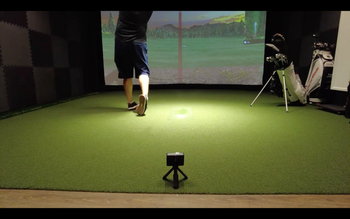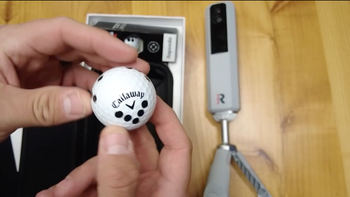Begin by taking an honest look at your handicap and how you swing. Players with 20+ handicaps benefit from forgiving gear while single-digit golfers demand precision tools. You need a driver, fairway wood, 6-8 irons, plus 2-4 wedges to build your core set. Select steel shafts when you want control with quick swings or graphite when you need extra yards with a slower tempo. Custom fitting typically improves accuracy by 15-20%! Mix high-end gear with affordable choices that suit your current abilities. There's plenty more to investigate for peak results.
Table of Contents
Figuring Out Your Game Type and Ability
Selecting proper golf gear begins with honestly evaluating your current abilities, not your dream level. Your handicap number reveals the truth: when you're over 20, you're facing high handicap issues requiring maximum forgiveness. Check this out: a newbie swinging 85 mph requires totally different gear than a scratch player bombing 110 mph drives.
Study your performance trends. Struggling with driver consistency? That's your swing velocity and abilities speaking up. Perhaps you're a mid-handicapper who hits irons well but struggles near the green; that weakness around the cup should influence your wedge choices. Your game type involves more than raw power; it's about identifying stroke-losing areas. Tournament-level players with single-digit handicaps demand accuracy-based gear matching their honed abilities.
Typical golfers shooting 105-135 make up most players and require clubs emphasizing forgiveness above accuracy. Knowing your place in this range keeps you from purchasing gear that won't help your real abilities.

Choosing Suitable Club Categories for Your Set
What makes most players freeze when facing that huge equipment display at the golf store? Easy, they're overcomplicating things! Look, you require basic clubs covering all distances and scenarios. Begin with a driver for peak tee shot distance, then pick up a fairway wood (3-wood's perfect) for lengthy fairway strikes. You need 6-8 irons ranging from middle irons to short ones, so they'll manage most green approaches. Now it gets fun: pick between fairway woods or hybrids depending on comfort level. Most players hit hybrids better from thick grass. Include 2-4 wedges (at least a pitching wedge, preferably a sand wedge too), and a reliable putter. Note that hybrids (also called utility clubs) can substitute those tough long irons. Wedges create extra spin, which matters when you require accurate shots near the pin. That's your full weapon collection!
Understanding Shaft Construction and Bend
With your ideal club collection ready, each club's shaft becomes your hidden advantage for revealing superior results. Listen up, shaft construction seriously impacts your play. Steel shafts tip the scales near 120 grams, providing g remarkable feel for quicker swing tempos, but graphite options (50-85 grams) assist slower swingers in adding yards via extra bend.
Bend choice counts big time! Regular bend fits average swing tempos, but stiff bend helps hard swingers maintain precision. Envision bend working like a fishing rod overly rigid won't flex right, overly bendy ruins control.
Graphite runs pricier yet dampens impact wonderfully. Steel's affordable and basically unbreakable. Your swing tempo guides all decisions, so proper fitting matches the shaft properties to your natural motion. Incorrect shaft selection causes wild shots and ruins your reliability throughout play. Correctly matched shafts improve your launch path for the best carry length plus precision.
Professional Fitting for Peak Results
Though shaft selection builds your base, expert club matching revolutionizes standard gear into custom instruments fitting your specific motion. An experienced fitter begins examining your swing pace, shot shape tendencies, and body traits including height and range of motion. They'll employ tracking devices capturing exact information about your swing mechanics, recording details from rhythm to club angle.
Throughout testing, you'll strike balls using different head and shaft pairings as the fitter studies ball velocity, rotation numbers, and shot patterns. This isn't guessing, it's information-based improvement! The fitter adjusts lie positions, face angles, and handle dimensions. Matching clubs increases playing satisfaction since players get gear ideally suited for their personal requirements and tendencies. This whole experience provides relaxed conditions for unveiling your ideal gear combination.
Correctly matched clubs enhance precision 15-20% and increase yardage via better launch physics.

Managing Costs Against Performance and Value
Following your fitting session, you'll confront converting those ideal measurements into real purchases, and that's when clever spending saves the day. Club prices span hundreds to thousands, requiring you to match performance against financial reality.
Listen: top names, including Titleist and Callaway, provide remarkable results yet demand bigger budgets. Value-priced alternatives still improve your scores without emptying accounts. Consider lasting worth strong clubs that reduce costs by enduring longer and avoiding frequent replacements.
Evaluate construction thoughtfully. Titanium heads exceed steel prices yet give better results. Shaft stiffness influences pricing and swing response, as firmer options usually cost extra. Note that higher costs frequently indicate better performance and construction that committed players demand. Include a protection plan; it increases your purchase security!
Similar to golf facilities evaluating nearby populations within 10 miles for sustainability, your gear decisions must match local playing conditions and regular course layouts.
Trying Equipment Prior to Buying
Don't spend your money until you've actually swung those clubs under real playing situations, and I'm talking genuine swings, not merely holding them inside! Listen: practice facility time shows you yardage and consistency in steady settings. You must try drivers thoroughly because they affect your complete play, yet include irons for reliability testing and wedges for investigating distinct sole designs.
Strike several balls per club, minimum five to ten attempts, confirming result trends. Tracking systems deliver specific information about shot shape, rotation, and velocity,y critical for evaluating options. Expert matching appointments provide exact modifications suited to your movement traits. Don't forget: checking putters for touch and aim matters similarly to crushing drivers at practice areas!
Important Extras for Completing Your Equipment
Those gleaming clubs represent your starting point. Consider them your home's frame, still requiring appliances, fixtures, and finishing elements, making it complete! You require golf balls (naturally), tees per stroke, and coins marking green locations. Include a club towel to maintain clean equipment and a glove to improve your grip. UV defense includes packing lotion, a cap, and shades for sunny rounds. A face cleaner maintains your grooves working right, and training rods assist practice sessions. Listen: these extras aren't optional luxuries, they're game-changing items, maintaining your comfort and peak play every outing.

Frequently Asked Questions
When Should You Update Clubs While Getting Better?
During improvement, you'll generally update equipment every 3-6 years, yet listening to your progress speed counts beyond calendar time. During rapid advancement, you could exceed equipment within 2-3 years. Wedges require updating soonest (each 75-100 rounds), and putters endure longest. Monitor yardage shifts and precision problems that indicate you've exceeded your existing gear, requiring improved-matched tools.
Is Combining Different Manufacturers in Your Bag Acceptable?
You're free to combine different manufacturers throughout your bag, and plenty of players choose this approach. Listening to combining manufacturers allows personalizing every club for particular requirements and frequently reduces expenses versus purchasing one manufacturer's full lineup. You could prefer Titleist irons yet want a TaylorMade driver. Simply confirm every club matches your motion via separate matching appointments for the best results.
How Do Men's and Women's Equipment Differ?
Ladies' equipment runs 1-2 inches less than gents', matching your posture and setup. They're lighter overall, assisting you in creating quicker head velocity using reduced work. You'll recognize softer shafts throughout ladies' lineups, complementing moderate swing paces. The irons feature higher face angles, improving precision, whereas gents' equipment emphasizes yardage and strength.
Must Southpaws Try Playing Standard Instead?
Don't make yourself play standard if you're naturally southpaw. Although standard gear costs less and appears everywhere, you'll fight uncomfortable swing patterns because your stronger side leads the motion. This complicates building correct muscle patterns enormously. Yeah, certain southpaws adjust fine, yet you'll swing easier and smoother using southpaw equipment fitting your natural side.
What's Proper Equipment Maintenance?
Wash your equipment following each outing with sudsy liquid and gentle bristles, concentrating on cleaning faces! Inspect handles often for deterioration and swap them once they get smooth. Keep equipment somewhere moisture-free and temperate while employing covers, avoiding dings. Listen: yearly thorough maintenance maintains peak function and reduces expenses over time.
Final Thoughts
Selecting proper equipment isn't rocket science. Begin with truthful ability evaluation, then prioritize correct matching for vital pieces first. Skip spending everything on tour-level gear when you're learning! Sample different choices at nearby stores, and understand that correctly matched middle-tier equipment beats costly gear mismatched to your motion.





